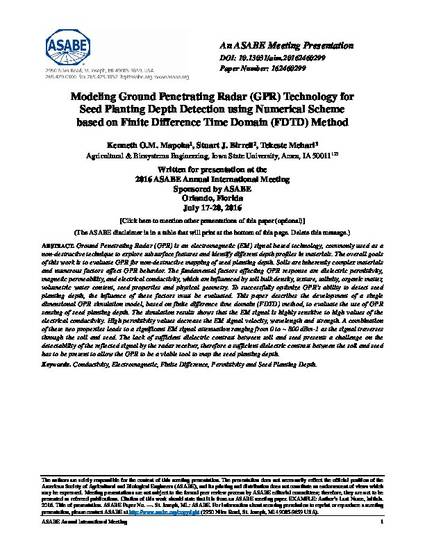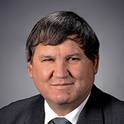
Ground Penetrating Radar (GPR) is an electromagnetic (EM) signal based technology, commonly used as a non-destructive technique to explore subsurface features and identify different depth profiles in materials. The overall goals of this work is to evaluate GPR for non-destructive mapping of seed planting depth. Soils are inherently complex materials and numerous factors affect GPR behavior. The fundamental factors affecting GPR response are dielectric permittivity, magnetic permeability, and electrical conductivity, which are influenced by soil bulk density, texture, salinity, organic matter, volumetric water content, seed properties and physical geometry. To successfully optimize GPR’s ability to detect seed planting depth, the influence of these factors must be evaluated. This paper describes the development of a single dimensional GPR simulation model, based on finite difference time domain (FDTD) method, to evaluate the use of GPR sensing of seed planting depth. The simulation results shows that the EM signal is highly sensitive to high values of the electrical conductivity. High permittivity values decrease the EM signal velocity, wavelength and strength. A combination of these two properties leads to a significant EM signal attenuation ranging from 0 to ~ 800 dBm-1 as the signal traverses through the soil and seed. The lack of sufficient dielectric contrast between soil and seed presents a challenge on the detectability of the reflected signal by the radar receiver, therefore a sufficient dielectric contrast between the soil and seed has to be present to allow the GPR to be a viable tool to map the seed planting depth.
Available at: http://works.bepress.com/stuart_birrell/52/

This paper is from 2016 ASABE Annual International Meeting, Paper No. 162460299, pages 1-17 (doi: 10.13031/aim.20162460299). St. Joseph, Mich.: ASABE. Posted with permission.